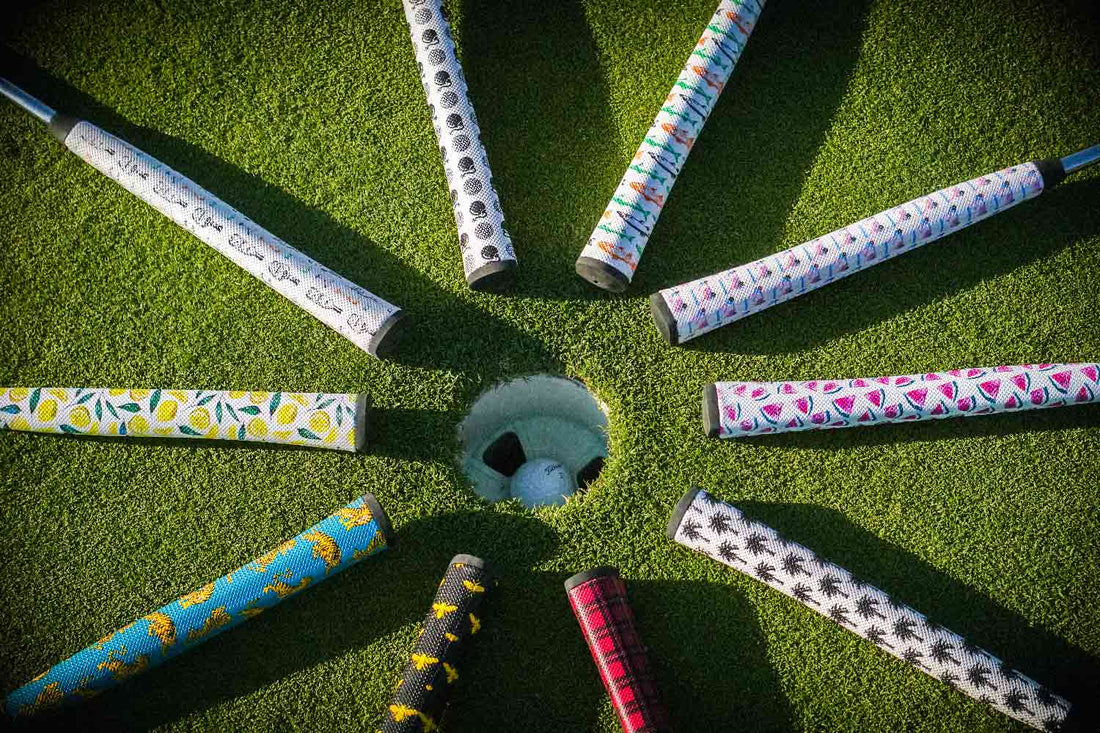
How Golf Grips Improve Your Game: The Science Behind Better Grips
Share
In the world of golf, the smallest details often make the biggest difference. While many players focus on clubs and swing techniques, one critical component that often goes unnoticed is the golf grip. The grip is the only part of the club a golfer touches during their swing, making it an essential factor in achieving consistency, control, and comfort. Let's explore the science behind modern golf grips and how they can transform your game.
Why Golf Grips Matter
The grip is the foundation of a golfer’s connection to the club. A poorly chosen or worn-out grip can lead to inconsistent shots, reduced control, and even discomfort or injury over time. On the other hand, a well-designed grip provides stability, enhances control, and ensures a comfortable hold throughout your game.
The Role of Materials in Modern Golf Grips
Golf grips have come a long way from the leather wraps of the past. Today’s grips are crafted using advanced materials designed to maximize performance:
-
Rubber and Polymer Blends: Most modern grips are made from durable rubber or polymer blends. These materials provide excellent shock absorption, ensuring a smoother feel even on off-center hits.
-
Textured Surfaces: Textures, such as ridges or dimples, improve traction and reduce the risk of slipping, even in wet or sweaty conditions.
-
Corded Grips: These grips integrate woven fibers for additional traction, making them ideal for players with sweaty hands or those playing in humid or rainy climates.
-
Soft-Touch Materials: For golfers prioritizing comfort, softer materials provide a cushioned feel, reducing hand fatigue during long rounds.
How Golf Grips Enhance Performance
-
Improved Control: A quality grip ensures that your hands stay in the correct position throughout your swing. This stability translates to more consistent ball striking and better shot accuracy.
-
Enhanced Comfort: Ergonomically designed grips reduce tension in the hands and wrists, allowing for a more relaxed and natural swing motion.
-
Reduced Shock and Vibration: Advanced materials absorb impact vibrations, making each shot feel smoother and reducing strain on your hands and arms.
-
Weather Resistance: Specialized coatings and materials help maintain performance in various weather conditions, ensuring a reliable grip in both rain and shine.
Grip Size: The Key to Customization
The size of your golf grip is just as important as its material. An improperly sized grip can lead to mishits and discomfort. Here’s how to determine the right size for your hands:
-
Undersized Grips: Ideal for players with smaller hands or those who prefer more hand action in their swing.
-
Standard Grips: Suitable for the average golfer, offering a balance of control and comfort.
-
Midsize and Oversize Grips: Best for players with larger hands or those seeking to reduce grip pressure and tension.
Maintaining Your Golf Grips
To keep your grips performing at their best, regular maintenance is essential:
-
Clean Your Grips: Use warm water and mild soap to remove dirt, sweat, and oils that accumulate over time.
-
Inspect for Wear: Look for signs of wear, such as smooth spots or cracks, and replace grips when necessary.
-
Store Properly: Keep your clubs in a cool, dry place to prevent grips from hardening or degrading.
Conclusion: Elevate Your Game with Better Grips - Stinger Golf Grips
Investing in high-quality golf grips is one of the easiest ways to improve your game. Whether you’re a beginner or a seasoned pro, the right grip can enhance your control, comfort, and confidence on the course. By understanding the technology and science behind modern golf grips, you can make an informed choice and take your performance to the next level.
Ready to upgrade your game? Explore a range of our premium golf grips and experience the difference for yourself!









